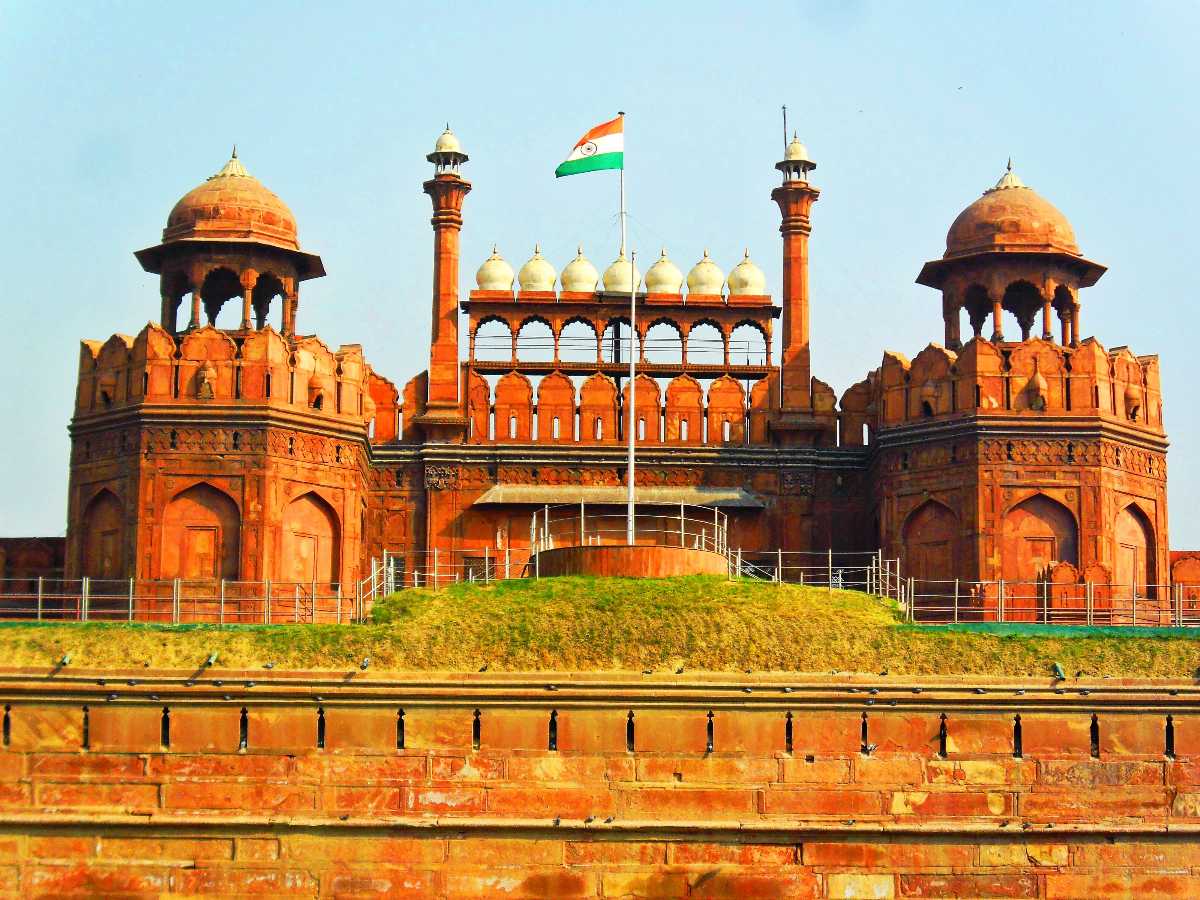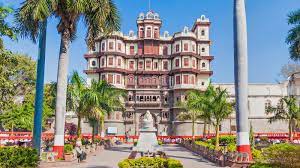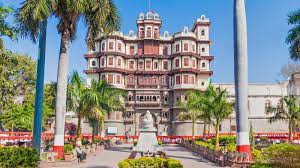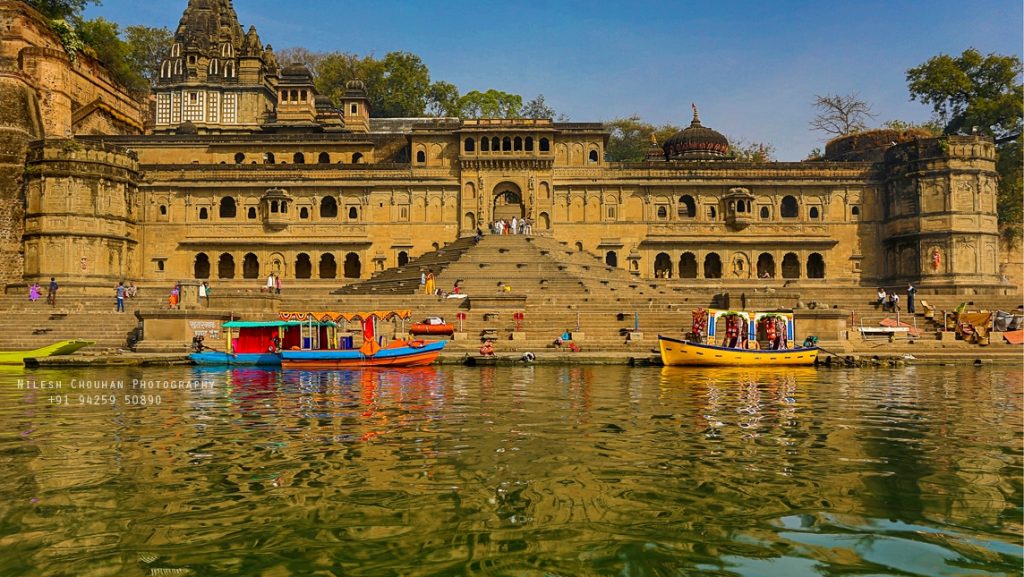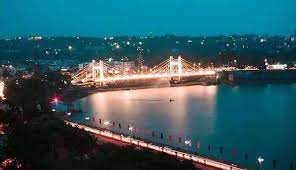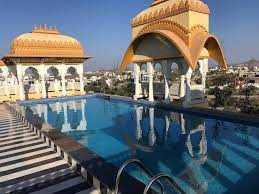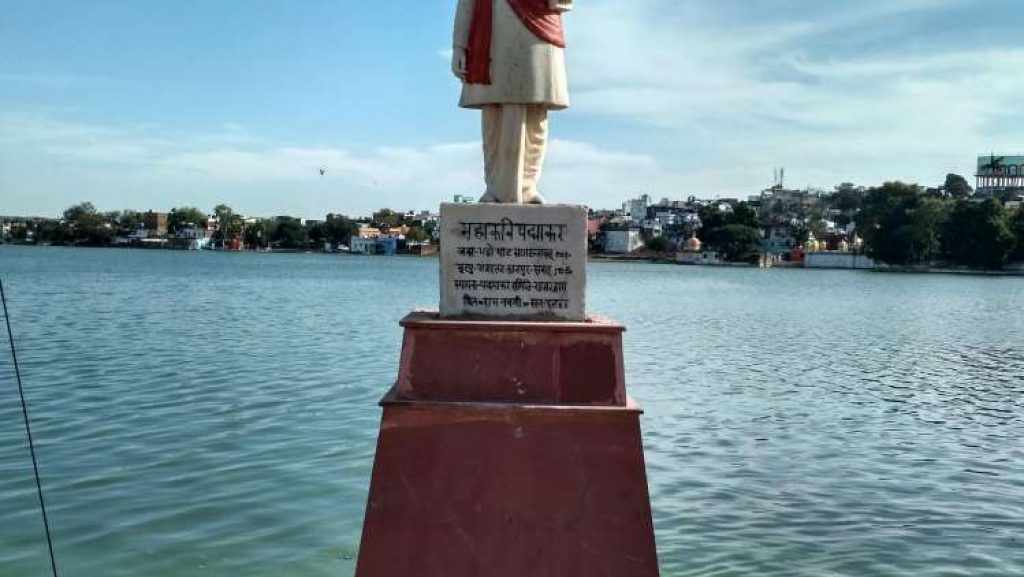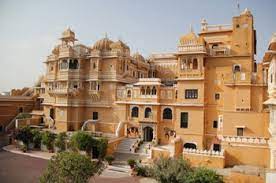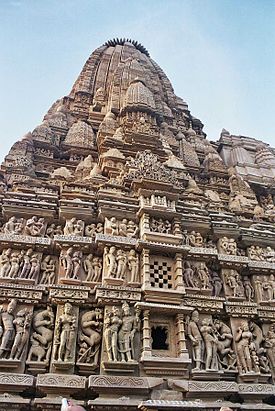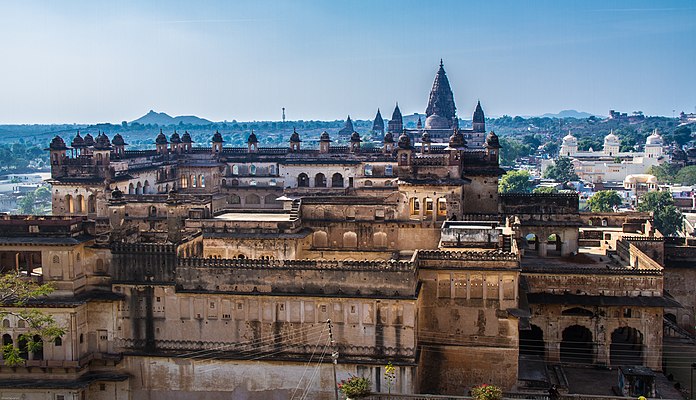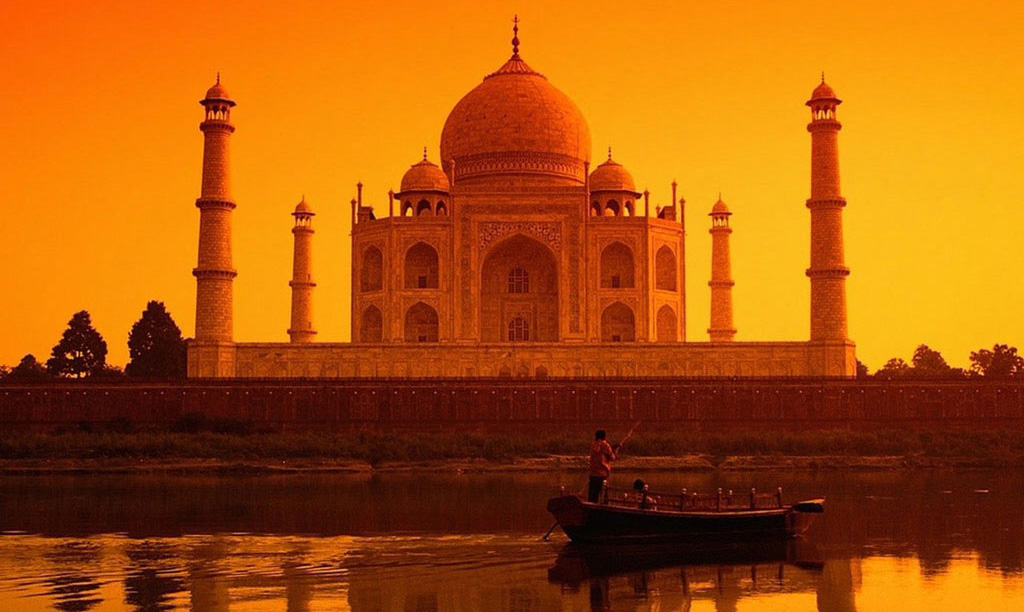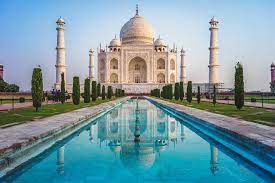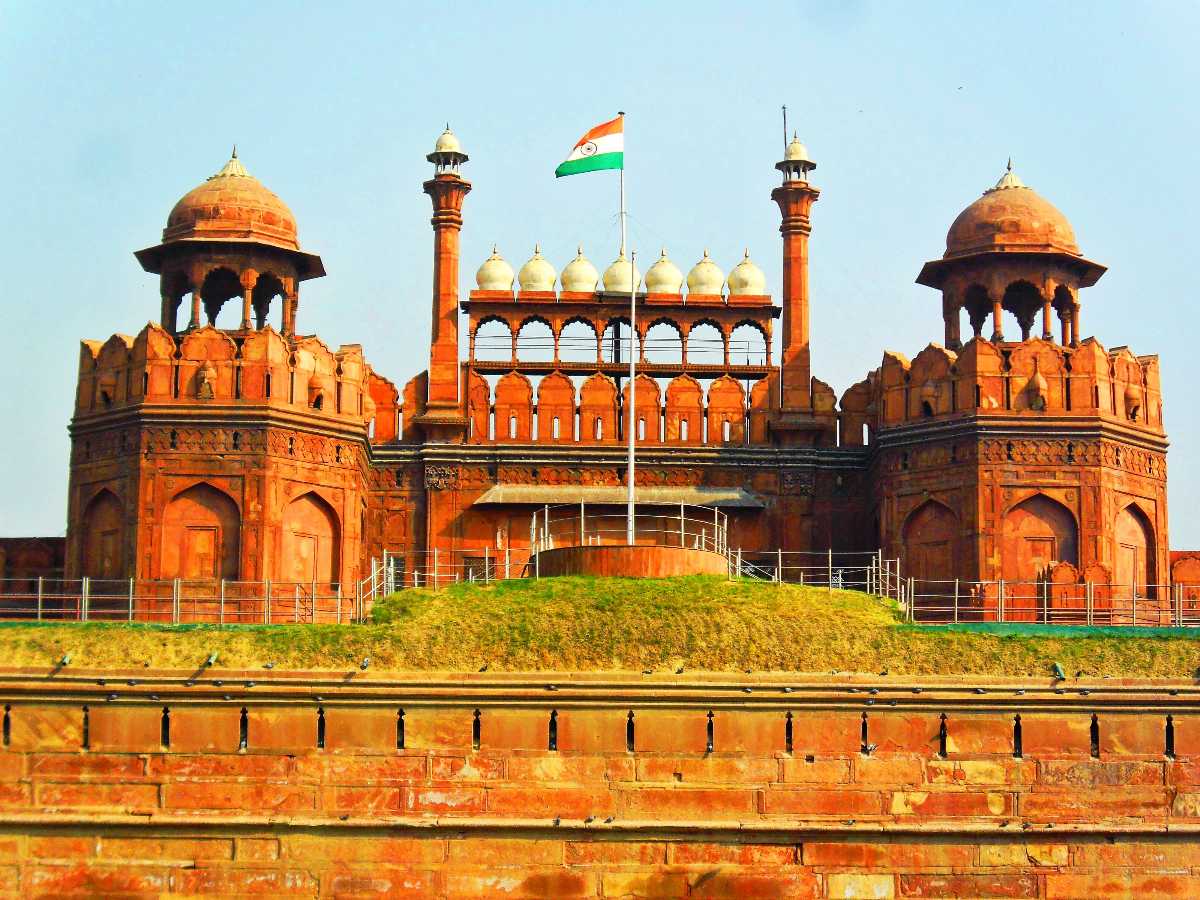Central India Heritage !
Route : Delhi Indore Mandu Maheshwar Bhopal Sanchi Sagar Chanderi Khajuraho Orchha Agra Delhi
16 Days 15 Nights
Overview
Central India Heritage !
Location Map
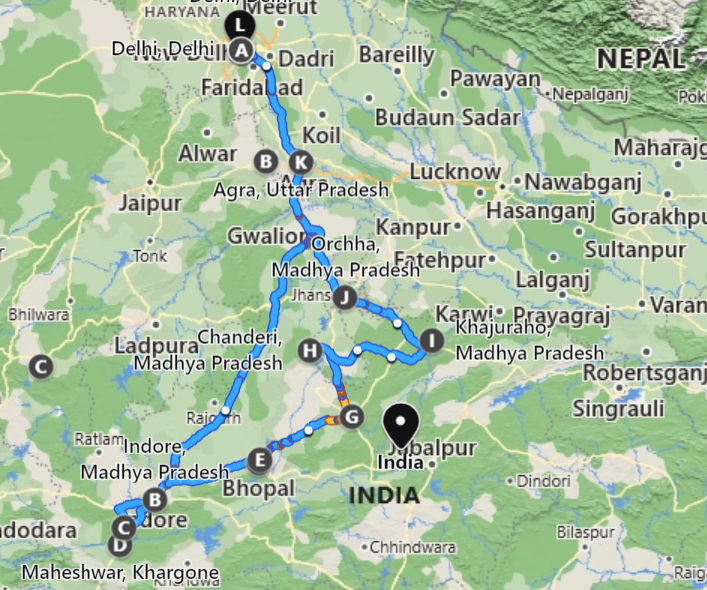
Itinerary
-
1Day 1 : ARRIVE DELHI
Arrive Delhi Meeting and assistance on arrival and transfer to hotel. Overnight at the hotel.
-
2Day 2 : DELHI
Breakfast at the hotel. After the breakfast, proceed for the sightseeing tour of Old and New Delhi. OLD DELHI - the 300-year-old walled city built by Emperor Shah Jehan in 1648 as his capital and named after him. Visit the black and white onion dome and minarets of the Jama Masjid, the most elegant mosque in India. Drive past the magnificent Red Fort built of red sandstone. Then visit Raj Ghat, where Mahatma Gandhi was cremated in 1948. Drive through the old city subject to traffic restrictions. NEW DELHI - the new capital designed by Sir Edward Lutyens. Drive past the Presidential Palace, the Rashtrapati Bhavan and the secretariat buildings - the centre of all government activity and down the main avenue, the impressive Rajpath to the World War I memorial arch, the India Gate and the High Court Building. Visit Humayun’s Tomb built in 1565 AD by his grieving widow Haji Begum, the Qutub Minar, 72 metres high and the ruins of Quwat-ul-Eslam (Light of Islam) Mosque. See Delhi’s most curious antique, the uncorroded Iron Pillar, which dates back to the 4th century AD. Overnight at the hotel.
-
3Day 3 : DELHI / INDORE – BY FLIGHT INDORE - MANDU OR DHAR (APPROXIMATELY 100 KMS/ 3 HRS)
Morning in time transfer to airport to connect flight for Indore. Departure from Delhi: 0715 hrs Arrive in Indore: 0845 hrs. Upon arrival in Indore, depart by surface for Mandu or Dhar and check-in at hotel. This afternoon proceed for the sightseeing tour of Mandu. Champa Baoli - An elaborately constructed step-well, the place was so named as its waters were believed to smell like the 'Champa' flower. A summer retreat of the emperor,; it houses cool wells, underground rooms (Taikhanas) & subterranean bathrooms. Jami Masjid - This huge edifice, built in 1454, was one of the finest achievements of the Ghauri dynasty. Faced with red sandstone, the monument dominates the village of Mandu and is structured on the 'Omayyed Mosque' in Damascus, Syria. Tomb of Hoshang Shahh - It lies on the south-west of the Jami Masjid and is believed to be the oldest marble building of India. Sheathed completely in white marble, its design and workmanship greatly influenced Shah Jahan, who sent his architects to study it before building the Taj Mahal. Ashrafi Mahal - It was built by Mahmud Shah Khilji. Originally constructed as a Muslim religious school (Madarsa), the place was later extended to become his own mausoleum. The building collapsed due to faulty architecture and now stands amidst ruins. Baz Bahadur's Palace - Located near Rewa Kund, this place was erected in 1509 by Baz Bahadur, the last king of Malwa. It exhibits a skillful blend of Mughal and Rajasthani architectural style, with high terraces, ornate halls and spacious patios. Rupmati's Pavilion - This fort was originally built as an army observation post and offers some enchanting views of the Narmada gurgling through the Nimar plains below. With its striking pavilions, the fort was used as a summer retreat by the queen. Overnight at the hotel.
-
4Day 4 : MANDU - MAHESHWAR (APPROXIMATELY 60 KMS / 2 HRS)
Breakfast at the hotel. Morning depart by surface for Maheshwar, upon arrival check-in at the hotel. This afternoon proceed for the sightseeing tour of Maheshwar. Temples of Maheshwar - Temples of Maheshwar are famous for the unique overhanging balconies. Like temples of olden times in many parts of India, temples here also have intricately crafted walls. And the one thing that will capture your attention will be the exceptionally carved doorway that welcomes you to the world of history. Kaleshwara Temple, Rajarajeshwara Temple, Akhileshwara Temple and Vithaleshwara Temple are the most known temples of the area. Navdatoli- Archaeological Site - Situated just outside Maheshwar, Navdatoli is an archaeological site that was discovered in the 1950. In the early stages of excavation, painted pottery and microliths were found. But as they dug deeper, it was confirmed that people of many cultures from Lower Paleolithic period till 18th century have resided here. Structures of washed away houses have also been found that tells us that a big flood would have struck this area. Overnight at the hotel.
-
5Day 5 : MAHESHWAR - BHOPAL (APPROXIMATELY 300 KMS / 6.5 HRS)
After breakfast depart by surface for Bhopal. Upon arrival check-in at the hotel. Late afternoon visit Laxmi Narayan Temple. Laxmi Narayan Temple - Also known as Birla Temple, Laxmi Narayan temple was built by the Birlas and is commemorated to the Hindu deities, Laxmi & Vishnu. This sandy-yellow edifice, embellished with idols of many Hindu Gods and Goddesses, poses a magnificent sight. Birla Museum, adjoined to its precinct, is a storehouse of art and artifacts that date back to the 12th century. The beautifully carved archway and the trailing green lawns of the place make it a famous tourist draw of Bhopal. Taj-ul Masjid - One of the largest and most beautiful mosques in India, Taj-ul-Masjid literally means 'The Crown of Mosques' and is an imposing landmark of Bhopal. Its pink façade, coroneted with white-domed minarets, soars to the skyline and stands as a stunning ovation to the rule of Begums in Bhopal. Its construction began under the regime of Shah Jehan Begum, but saw completion after her death. This striking monument is also used as a religious school (madarsa) during the day. Overnight at the hotel.
-
6Day 6 : IN BHOPAL SAME DAY EXCURSION TO BHOJPUR - BHIMBETKA- (73 KMS ONE WAY)
After breakfast, proceed for full day excursion to Bhojpur & Bhimbetka. Bhojpur-Founded by the legendary Parmar King of Dhar, Raja Bhoj (1010-1053), and named after him, Bhojpur, 28 km from Bhopal, is renowned for the remains of its magnificent Shiva temple and Cyclopean dam. The temple which has earned the nomenclature of the Somnath of the east is known as the Bhojeshwar Temple. The temple was never completed and the earthen ramp used to raise it to dome-level still stands. Had it been completed, it would have had very few rivals. As it is, even with the ravages of time, it remains one of the best examples of temple architecture of the 11th - 13th centuries. Bhimbetka-Surrounded by the northern fringe of the Vindhyan ranges, Bhimbetka lies 46 km South of Bhopal. In this rocky terrain of dense forest and craggy cliffs, over 600 rock shelters belonging to the Neolithic age were recently discovered. Here, in vivid panoramic detail, paintings in over 500 caves depict the life of the pre-historic cave-dwellers making the Bhimbetka group an archaeological treasure, an invaluable chronicle in the history of man. Late afternoon return to Bhopal for overnight stay.
-
7Day 7 : BHOPAL-UDAIGIRI-SANCHI (APPROXIMATELY 65 KMS / 2 HRS)
Breakfast at the hotel. Morning depart by surface for Sanchi en route visiting Udaigiri. Udaigiri-13 km from Sanchi and 4 km from Vidisha are a group of rock-cut cave sanctuaries carved into a sandstone hill that stands sentinel-like on the horizon. An inscription in one of these states that it was produced during the region of Chandragupta II (382-401 AD), thus dates these caves to 4th-5th century AD. Continue drive to Sanchi, upon arrival check-in at the hotel. This afternoon proceed for the sightseeing tour of Sanchi. Overnight at the hotel.
-
8Day 8 : SANCHI – GYARASPUR & UDAYPUR –SAGAR (APPROXIMATELY 180 KMS/ 5 HRS)
After breakfast depart by surface for Sagar en route visiting Gyaraspur & Udaypur. Gyraspur-41 km north-east of Sanchi, Gyraspur was a place of considerable importance in the medieval period. Here in the ruins called Athkhamba (Eight Pillars) and Chaukhambe (Four Pillars) are what remain of the columned halls of two temples belonging to the 9th and 10th centuries AD. The faceted shafts of Athakhambe, with their extreme delicacy of carving, testify to the high degree of craftsmanship during the period. Other monuments of note at Gyraspur are of the early 10th century: Bajra Math and the Mala Devi Temple, the latter distinguished by its carved pillars with foliate motifs, representative of the richest post- Gupta style. Udaypur-93 km from Sanchi via vidisha and ganj basoda. The colossal Neelkanteshwar temple here is an outstanding example of Parmara art and architecture of the 11th century AD. The crowning beauty of this temple is its well proportioned and gracefully designed spire and delicately carved medallions adorning its sides. Built of fine red sandstone and standing on a lofty platform, the temple consists of a garba-griha (shrine room), a sabha mandap hall) and three pravesha mandaps (entrance porches). Bijamandal, Sahi Masjid and Mahal, Sher Khan-ki-Masjid and Pisnari-ke-Mandir are some of the other monuments in Udaypur. Continue drive to Sagar, upon arrival check-in at the hotel. Only basic 2 star category hotels with limited facilities are available in this area Overnight at the hotel.
-
9Day 9 : SAGAR-ERAN-CHANDERI (APPROXIMATELY 200 KMS / 5 HRS)
Breakfast at the hotel. Morning depart by surface for Chanderi en route visiting Eran. Eran is the site of first reported monument of Sati dated 510 AD in India. The archaeological site nearby Eran has revealed several Gupta inscriptions. The village of Eran has a most interesting collection of archaeological relics. There is a fort in rulings attributed to the Dangis, who formerly dominated over this region. The site had a number of Vishnu shrines but nothing now remains except some of the lower courses of masonry, four standing columns with their architrave and some beams and part of door ways. The Principal statue is a colossal Varaha about 10 feet high. The excavation conducted by the Department of Archeology of the University of Sagar have yielded relics similar to those found at Maheshwar and Tripura showing that Eran formed the Northern most limit of the Chalcolithic culture in Madhya Pradesh. Excavations were carried out at Eran in 1960-61 to 1964-65; and 1987-88.Excavations at Eran have revealed about the earliest fort built by mud ramparts. Prof. K.D. Bajpai has studied coins from Eran excavations and has done a chronological analysis. He has given a note on ‘Svabhoganagara’ in the Eran inscription of Samudragupta. Continue drive to Chanderi, upon arrival check-in at the hotel. This afternoon proceed for the sightseeing tour of Chanderi. The documented history of Chanderi goes back to the early 11th century and is a kaleidoscope of movement and activity prompted by its strategic location. On the borders of Malwa and Bundelkhand, the town dominated the trade routes of Central India and was proximate to the arterial route to the ancient ports of Gujarat as well as to Malwa, Mewar, Central India and the Deccan. Consequently, Chanderi became an important military outpost, prized by rulers with power or ambition, and repeatedly experienced the might of men who moulded the destiny of Hindustan. Overnight at the hotel.
-
10Day 10 : CHANDERI-DEOGARH-CHANDERI (ONE WAY APPROXIMATELY 70 KMS/ 2 HRS)
After breakfast proceed for the day excursion to Deogarh. Deogarh is a village near the town of Lalitpur in Lalitpur district, in the Indian state of Uttar Pradesh, India. It is known for the monuments, on and near, the hill fort on the right bank of the Betwa River. A plethora of ancient monuments of Hindu and Jain religions are found within and outside the walls of the fort. The hill fort contains a cluster of Jain temples the oldest of which date to the 8th and 9 th centuries. Late afternoon return to Chanderi for overnight stay.
-
11Day 11 : CHANDERI-KHAJURAHO (APPROXIMATELY 150 KMS / 4 HRS)
Breakfast at the hotel. Morning depart by surface for Khajuraho. On arrival check-in at the hotel. In the temple architecture of India, the Khajuraho complex remains unique. One thousand years ago, under the generous and artistic patronage of the Chandela Rajput kings of Central India, 85 temples, magnificent in form and richly carved, came up on one site, near the village of Khajuraho. The amazingly short span of 100 years, from 950 AD - 1050 AD, saw the completion of all the temples, in an inspired burst of creativity. Today, of the original 85, only 22 have survived the ravages of time; these remain as a collective paean to life, to joy and to creativity; to the ultimate fusion of man with his creator. Overnight at the hotel.
-
12Day 12 : KHAJURAHO-ORCHHA (APPROXIMATELY 175 KMS / 4 HRS)
Breakfast at the hotel. Morning visit Western and Eastern group of temples. Western Group of temples, the most important temple being the Kandariya Mahadeo Temple-dedicated to Lord Shiva. It is one of the largest and most typical of the Khajuraho temples. Visit the Chaunsat Yogini Jain Temple-dedicated to the 64 "Yoginis" or attendants of Goddess Kali. This temple stands apart from the rest. Also see the Chitragupta or Bharatji Temple with a lovely sculpture of Lord Vishnu in his 11-headed form. The sculptures that adorn the temples, carved in stone depict gods, goddesses and amorous couples. Later visit the Eastern Group of temples including the Ghantai Temple, Vamana Temple dedicated to the "Vamana" or dwarf incarnation of Lord Vishnu and the Javari Temple. There are also three Jain Temples with beautiful carvings and non-erotic sculptures. Although these are Jain temples, they also contain numerous Vaishnav deities. Afternoon depart by surface for Orchha, upon arrival check-in at the hotel. Overnight at the hotel.
-
13Day 13 : ORCHHA-JHANSI – BY SURFACE JHANSI-AGRA – BY TRAIN
Breakfast at the hotel. Morning proceed for the sightseeing tour of Orchha town. Orchha was founded in the 16th century by the Bundela Rajput chieftain, Rudra Pratap, who chose this stretch of land along the Betwa River as an ideal site for his capital. Of the succeeding rulers, the most notable was Raja Bir Singh Ju Deo who built the exquisite Jahangir Mahal, a tiered palace crowned by graceful chhatris. From here the view of soaring temple spires and cenotaphs is spectacular. Complementing the noble proportions of their exteriors are interiors which represent the finest flowering of the Bundela School of painting. In the Lakshminarayan Temple and Raj Mahal, vibrant murals encompassing a variety of religious and secular themes, bring the walls and ceilings to rich life. In time transfer to Jhansi railway station (approximately 16 Kms) to connect train for Agra. Departure from Jhansi: 1756 hrs Arrive in Agra: 2025 hrs Meeting and assistance upon arrival at Agra railway station and transfer to hotel. Overnight at the hotel.
-
14Day 14 : IN AGRA
Breakfast at the hotel. Morning visit Taj Mahal and Agra fort. Visit Taj Mahal and Agra Fort. Taj Mahal which is the seventh wonder of world built by Shahjahan as a memorial to his wife Mumtaz Mahal by the banks of river Yamuna. After her untimely death, Shahjahan had her mortal remains buried in this mausoleum. And after his own demise he was placed to rest next to his beloved queen in the same mausoleum The Taj has been called the most extravagant monument ever built for the sake of love. The great monument took almost 22 years to build and was completed in 1653. Around 20,000 workers from all over the country and central Asia were recruited to translate this dream into a reality. (TAJ MAHAL REMAIN CLOSED ON FRIDAYS) Agra Fort- The foundation was laid by Emperor Akbar in 1565 and continued till the time of Shahjahan. The high red stone monument stretches for around 2.5 Kms, dominating a bend in the river Yamuna northwest of the Taj Mahal. The palace is a notable for its smooth blending of Hindu and central Asian architectural styles. The Diwan-i-Am (the hall of public audiences), the Diwan-i-Khas (the Hall of Private Audience), the Khas Palace (the private palace was used by emperor as a sleeping chamber), the Sheesh Mahal (palace of Mirrors), the Shah Jahani Mahal (Shahjahan’s Palace), Jahangiri Mahal (Jahangir’s Palace) and the Akbari Mahal (Akbar’s palace) are the fascinating palaces inside the fort. From the rear of Diwan-i-Khas a door leads to Mussaman Burj, a two storey pavilion, where Shahjahan was imprisoned by his son Aurangzeb in his old age. From here he caught the last glimpses of Taj Mahal before he died. Overnight at the hotel.
-
15Day 15 : AGRA - DELHI (Approximately 203 Kms / 6 hrs)
Breakfast at the hotel. Morning free for relax or independent activities. Afternoon depart by surface for Delhi, upon arrival transfer to International airport to connect flight for onward destination. No accommodation envisaged in Delhi on this day.
-
16Day 16 : LEAVE DELHI
Board flight.
